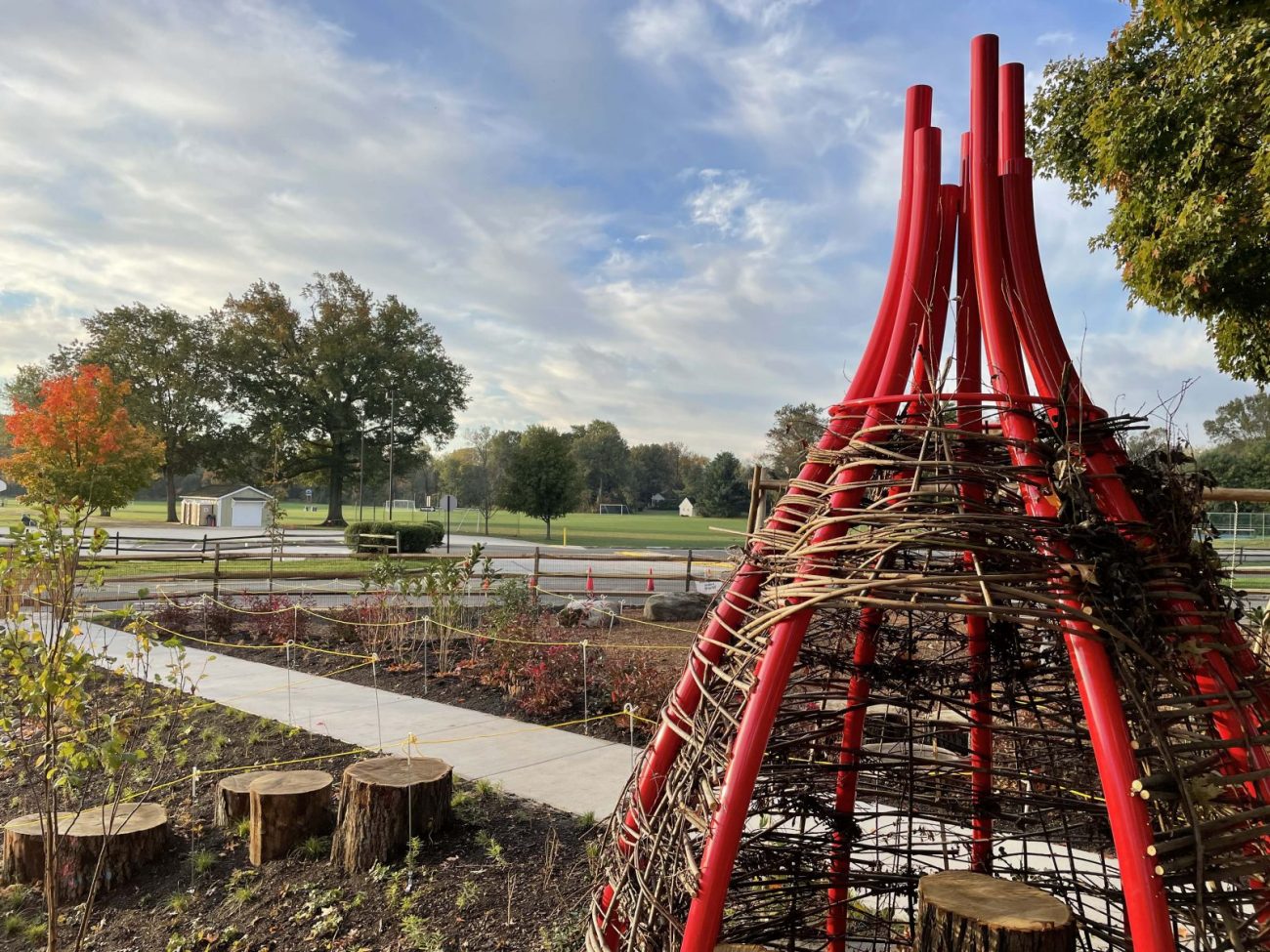Grand Opening for New Playscape Slated for Tuesday, November 2

Moorestown Friends School will open a new innovative Playscape for students on Tuesday, November 2 at 10 a.m. The private event is open only to faculty and staff. A livestream of the event will be available on the MFS Facebook account. The entire Lower School (Preschool – Grade 4) and fifth grade will be in attendance. Head of School Julia de la Torre and Lower School Director Jenel Giles will provide an orientation to the various Playscape elements for students and then officially open the area with a ribbon-cutting ceremony, joined by the MFS Fox mascot!
The Playscape is a product of a year-long design process that included students, teachers, and families. All Lower School students (almost 200) were given craft materials and built 3-D models of their ideal playgrounds. The goal was to create a natural play space with opportunities for open-ended play that grows with students as they age. Children wanted places to perch, hide, be upside down, climb, interact with nature, be alone, and be together. The Playscape achieves all of these things in one, multi-age, immersive natural environment.
The outdoor area is referred to as a Playscape instead of a playground because it’s not just about play structures and activity. The space highlights the instructional value of landscape architecture and the desire for children to engage with and learn from nature.
The Playscape features four play zones and several additional play areas.
Play Zone 1 features a log and net climber, pendulum swing, and slides. The log and net climber allows children of different ages and abilities to engage with the structure, gain height, gather and socialize, and challenge themselves as they age. The pendulum swing invites collaborative play where students work together to get the swing to move and accelerate to new heights. The custom-built slides include both single and community slides, so students can have choice in the types of experience they want.
In addition to the pendulum swing, six traditional swings are available for kids of all ages on Play Zone 2. It’s no surprise that children love swings. Students listed swings as the number one thing they wanted on their new Playscape.
Play Zone 3 includes another set of slides that are smaller and more accessible to younger students. A parkour set invites physical challenge and builds upper body strength and is complemented by monkey bars, which were found to be a favorite of students during the design process. Students also requested places where they could socialize and be in small groups. The hammock invites students to spend time alone or in conversation with others. It also serves as another swinging element.
Older students were eager for a field space where they could play ball games, tag, and team sports. The field on Play Zone 4 invites group play and incorporates green space where there was none before on the playground.
Students love building things and many requested a sand feature. A large, inviting sandbox incorporates natural log elements for multi-dimensional play.
A Rain Garden provides students with an up-close look at plantings and the insects and butterflies they attract. The wood steppers allow children to walk through the garden, interact with the space, and get a “forest floor” look at nature. The hill on campus presented a stormwater management challenge. The Rain Garden will collect rainwater from different zones on the Playscape and from up campus, routing it to this central space that will feed native plantings and eventually drain underground to the retention basin on the lower part of campus.
Two custom-designed playpods provide spaces where students can play, hide, and be alone or in small groups. The “onion pod” provides a treehouse effect, while the “clamshell pod” provides an underground/cave-like experience.
All of this joyous play will take place among over 14 newly planted trees and over 2,600 native plantings featuring 27 different species of plants that were selected to offer children different experiences at different times of year. Many change colors and have seed pods, berries, flowers, buds, and a variety of leaves in different seasons that children will enjoy collecting, sorting, or building into imaginative play.
